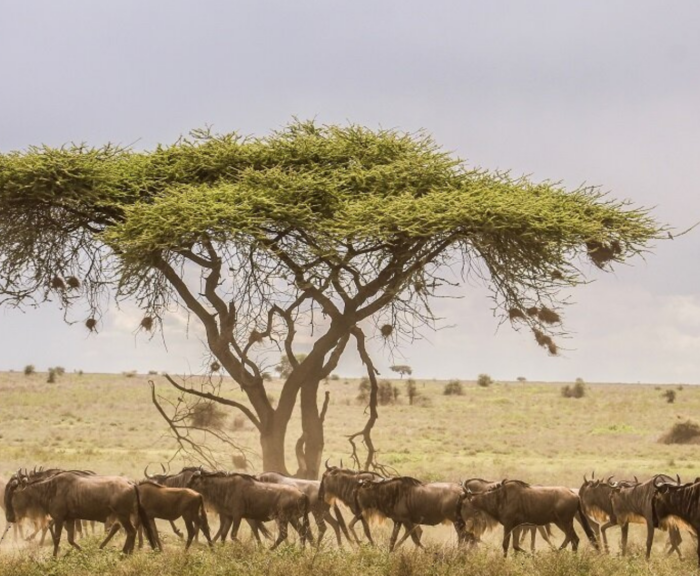Tanzania is a country rich in culture, history, and unique experiences. Each city offers its own charm, shaped by centuries of trade and tradition. Dar es Salaam is a vibrant coastal hub where African, Arab, and Indian cultures blend seamlessly. In Zanzibar’s Stone Town, historic spice markets and old architecture tell stories of the past. Mwanza, known as “Rock City,” offers beautiful views along Lake Victoria, while Arusha is the gateway to Tanzania’s famous safaris.
Each city has attractions that showcase Tanzania’s rich culture, from lively markets and traditional foods to scenic landscapes and historic sites. In this article, we will explore the vibrant cultural landscapes of Tanzania’s most captivating cities, uncovering their unique histories, traditions, and must-visit attractions.

Dar es Salaam
Dar es Salaam, Tanzania’s largest city, is a vibrant blend of African, Arab, and Indian influences. Historically a coastal trading hub, it offers a dynamic mix of modern life and vivid cultural traditions. The bustling streets are filled with vendors, busy markets, and a diverse population that gives the city its unique energy.m
Life in Dar es Salaam is lively and fast-paced, with crowded streets and a constant hum of activity. The city’s architecture, food, and customs reflect its multicultural heritage, making it a melting pot of different cultures and backgrounds. Locals and visitors enjoy exploring the city’s vibrant atmosphere and discovering its hidden gems alike.
Key attractions in Dar es Salaam include:
- Kariakoo Market: One of the city’s busiest spots, where locals shop for fresh produce, crafts, and essentials. It’s also a social hub, giving visitors a taste of local culture.
- Coco Beach: Located in Oyster Bay, this popular seaside escape is loved by both locals and tourists for its beach, swimming, and street food options.
- National Museum and House of Culture: Offers a glimpse into Tanzania’s history, with exhibits featuring artifacts from Olduvai Gorge and other cultural treasures.
- Village Museum: Showcases traditional Tanzanian huts and hosts workshops on crafts and performances, providing insight into local customs.
In the evenings, The Slipway Shopping Centre becomes lively with dining options, shops, and live music. It’s a favorite place to unwind, enjoy a meal, and soak in the city’s vibrant nightlife. Street food is an essential part of Dar es Salaam’s culinary scene. Popular dishes include Zanzibar Mix, a spicy soup, and fresh seafood sold at local stalls.
Together, these experiences capture the dynamic blend of history, culture, and modern life in Dar es Salaam, from lively markets and traditional foods to scenic beaches—a city loved by locals and visitors alike.
Mwanza
Known as “Rock City” for its unique granite formations, Mwanza sits on the shores of Lake Victoria, providing a beautiful lakeside backdrop. Initially a colonial trading post, Mwanza has grown into Tanzania’s second-largest city. The Sukuma people, Tanzania’s largest ethnic group, make up a large part of Mwanza’s population, bringing their agricultural practices and traditional dances, such as the Bugobogobo, to the city.
Mwanza’s atmosphere is a blend of urban and rural life, where fishing plays a significant role in the local economy. Visitors can enjoy a range of activities and sights:
- Bismarck Rock: A famous natural landmark offering scenic views, perfect for photography and sunset watching.
- Rubondo Island National Park: Known for its stunning landscapes and diverse wildlife, it’s ideal for hiking, bird watching, and serene beach walks.
- Cultural Heritage: The Sukuma people’s traditional music, dances, and crafts, especially showcased at venues like the Bujora Cultural Center, provide an immersive cultural experience.
- Bustling Markets: Mwaloni Market and other local markets offer fresh fish, produce, and handmade crafts, reflecting Mwanza’s vibrant local commerce.
Mwanza’s blend of natural beauty, cultural richness, and warm hospitality makes it an appealing destination for those looking to explore the authentic spirit of Tanzania.
Arusha
Arusha, known as Tanzania’s “safari capital,” lies at the foot of Mount Meru and serves as a gateway to famous national parks like the Serengeti and Ngorongoro Crater. This vibrant city has a rich cultural mix, influenced by Arab, Indian, and Swahili heritage, and is a bustling hub for both tourists and locals.
The lifestyle in Arusha is dynamic, with a fusion of traditional and modern influences. The central market is a bustling hub where locals and visitors shop for fresh produce, textiles, and crafts, offering a window into daily life. Friendly interactions with vendors and the vibrant atmosphere make it a memorable experience.
Some popular attractions include:
- Arusha National Park: Known for its diverse wildlife and activities like canoeing on Momella Lakes.
- Olpopongi Maasai Village: Provides an authentic cultural experience with traditional meals and performances.
- Arusha Coffee Lodge: A scenic spot to learn about coffee production and enjoy tastings.
Arusha’s food scene features Tanzanian staples like Ugali (maize porridge), Pilau (spiced rice), and Nyama Choma (grilled meat). For a taste of local flavors, Africafe and Khan’s Barbecue are popular spots.
Dodoma
As Tanzania’s official new capital, Dodoma serves as the center of political activities. It is known for its relaxed atmosphere compared to other major cities. Located in the country’s central region, Dodoma has a quieter charm, focusing more on administrative functions than tourism.
The lifestyle here is centered around government work and community activities. Dodoma’s markets are less crowded but offer a variety of local goods, reflecting the region’s agricultural roots.
Key attractions include:
- Jamhuri Park: A local favorite for relaxation and gatherings.
- Dodoma Cathedral: An architectural landmark from the colonial era.
- Wine Estates: Dodoma is known for its wine production, and visitors can enjoy vineyard tours and tastings.
Dodoma’s cuisine focuses on local ingredients, with dishes like samosas and grilled meats available at street vendors and small eateries.
Zanzibar City (Stone Town)
Stone Town, the historic district of Zanzibar City, is a UNESCO World Heritage site renowned for its rich cultural heritage. The city’s history as a major trade center has shaped its African, Arab, Indian, and European influences, making it a fascinating blend of cultures.
Walking through Stone Town’s narrow alleys, visitors encounter shops filled with spices, textiles, and handicrafts. The atmosphere is vibrant yet laid-back, with a lifestyle centered around fishing, agriculture, and cultural festivals.
Highlights of Stone Town include:
- Old Fort (Ngome Kongwe): A historic site hosting cultural events.
- House of Wonders (Beit-al-Ajaib): A museum that dives into Zanzibar’s history.
- Forodhani Gardens: Known for its night market, where locals and tourists sample fresh seafood and street food.
Zanzibar’s cuisine is heavily spice-infused, with must-try dishes like Zanzibar pizza, seafood curries, and pilau rice. Forodhani Gardens’ night market is particularly popular for its seafood offerings.
Tanga
Tanga, a coastal city in northeastern Tanzania, offers a peaceful atmosphere compared to larger cities. Known for its beautiful beaches and historical significance, Tanga has retained a unique charm from its days as a bustling trade port.
Life in Tanga is relaxed, with a strong influence from coastal fishing communities. The culture combines Swahili traditions with Arab influences, and residents enjoy a close-knit, community-centered lifestyle.
Top attractions include:
- Amboni Caves: Fascinating limestone caves with guided tours.
- Tanga Beach: Ideal for swimming and unwinding.
- Colonial Architecture: Historic buildings that reflect Tanga’s past.
Tanga’s coastal cuisine features fresh seafood, tropical fruits, and traditional dishes like ugali with fish or meat stews.
Mbeya
Located in Tanzania’s southwestern highlands, Mbeya is known for its cool climate and stunning landscapes. Initially founded as a mining town, Mbeya has become an important agricultural center, especially for coffee production.
The city’s lifestyle revolves around agriculture, with coffee and tea farming playing a significant role in the local economy. Mbeya’s diverse population creates a rich cultural tapestry that blends Tanzanian and neighboring influences.
Key natural attractions in Mbeya include:
- Mbeya Highlands: Great for hiking and nature exploration.
- Lake Ngozi: A scenic crater lake perfect for picnics and nature walks.
- Ruinsori Mountains: Known for breathtaking views and outdoor activities.
Mbeya’s culinary scene features hearty meals with locally grown produce, often stews from beans or vegetables served alongside ugali or rice.
Explore Tanzania Cities
In Tanzania, each city offers a unique journey through the country’s rich culture, history, and vibrant communities. From Dar es Salaam’s bustling markets and Zanzibar’s spice-infused alleys to Mwanza’s lakeside charm and Arusha’s safari adventures, Tanzania is a mosaic of experiences waiting to be explored. Whether you’re drawn to the lively rhythms of coastal cities, the quiet beauty of Dodoma’s wine estates, or the breathtaking landscapes of Mbeya, Tanzania’s cities provide a profound connection to its heritage and natural beauty, making it an unforgettable destination for all.
FAQ on Tanzania
1. Which is the most beautiful city in Tanzania?
Arusha is one of the most beautiful cities in Tanzania, known for its stunning attractions like Arusha National Park, which hosts diverse wildlife, and Mount Meru, Tanzania’s second-highest mountain after Kilimanjaro.
2. What is the richest city in Tanzania?
Dar es Salaam is Tanzania’s largest and wealthiest city. It is a significant economic hub in the region, with a rich history and a vibrant business landscape.
3. Is Tanzania a cheap or expensive country to visit?
Tanzania isn’t a low-budget destination, but with smart planning and budget-friendly strategies, a Tanzania safari or visit can be affordable.
4. Where do wealthy people live in Tanzania?
Many affluent residents of Tanzania live in Masaki, a luxurious neighborhood known for its beautiful properties and exclusive locations.
5. Why is Tanzania popular among tourists?
Tanzania is a globally renowned travel destination celebrated for its remarkable wildlife, vibrant culture, and iconic safari experiences.
6. What can $100 USD buy in Tanzania?
With $100 USD, you can cover many daily needs in Tanzania, including groceries, dining at local restaurants, and transportation costs, making it a relatively versatile budget.
7. What is the best month to travel to Tanzania?
The ideal time to visit Tanzania is during the long dry season, from July to October. Wildlife viewing is exceptional during this period, aligning with the Great Migration in the Serengeti.
8. Is Tanzania expensive to visit?
While Tanzania isn’t the most budget-friendly destination, you can enjoy a memorable safari or trip on a moderate budget by following money-saving tips. Note that Tanzania is a cash-based economy.
9. When is the best time to visit Zanzibar and Tanzania?
The best time to visit Zanzibar is during the dry season, from June to October. This period also aligns with Tanzania’s safari high season, making Zanzibar a popular post-safari destination.
10. Is Mbeya worth visiting?
Yes, Mbeya has several unique attractions, including the scenic Mbeya and Loleza Peaks, the Utengule viewpoint, and the fascinating Kiwira River, which is rich in local tales and myths.
The post Tanzania Cities with Rich Culture appeared first on Luxury Tanzania Safaris | Sababu Safaris.



